Saturn
Cloud formations, storms, and strong winds define the observed surface
- low density atmosphere, rich in hydrogen and helium – less dense than water!
- sunlight shines less brightly than on Jupiter, so clouds are cooler
- ice common
Numerous, beautiful rings!
- made of ice (shiny) – cometary remnants?
- 1,000s of rings in total
- only a few meters wide (RSaturn = 6 × 107 meters)
- shepherd moons push and hold the rings in place
Many major and minor moons – accreted asteroids?
- Titan:
rock and ice, nitrogen atmosphere (smoggy, inverse greenhouse effect), very cold
- Tethys:
rock and ice, cracked, cratered and old
- Enceladus:
recent geological activity (lightly cratered regions), heated by tides
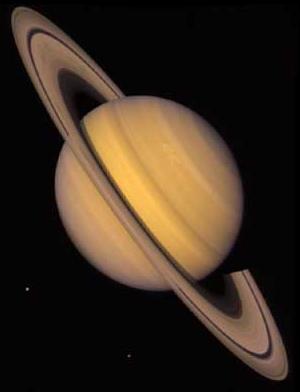
|
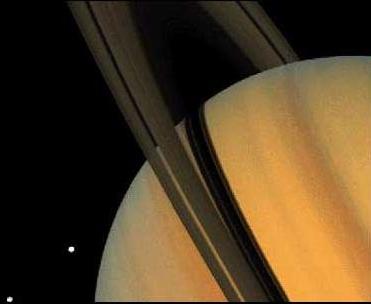
Tethys and Diones
| 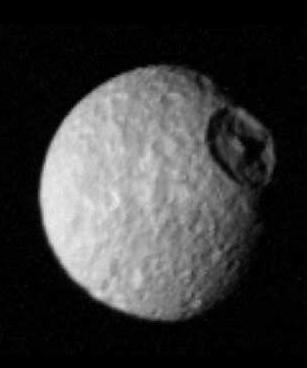
Mimas
| 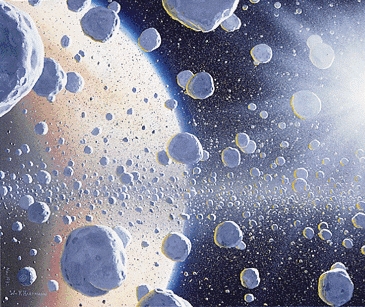
Inside the Rings
|
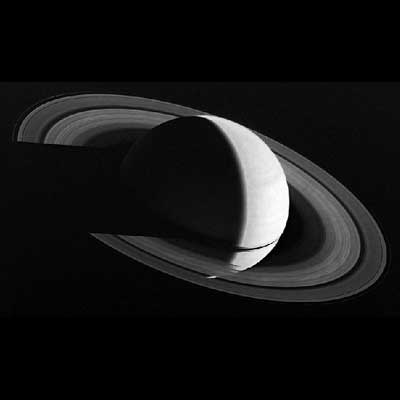
Shadowed rings
| 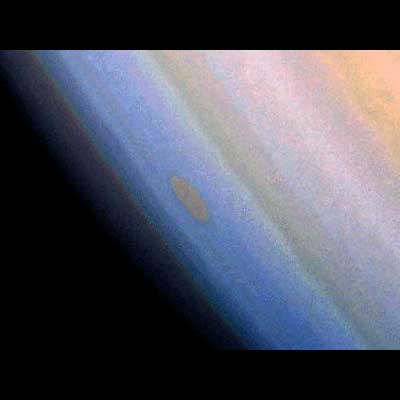
Red Cloud Feature
|
| Images of Saturn, its primary moons, and its glorious rings. [NASA] |











